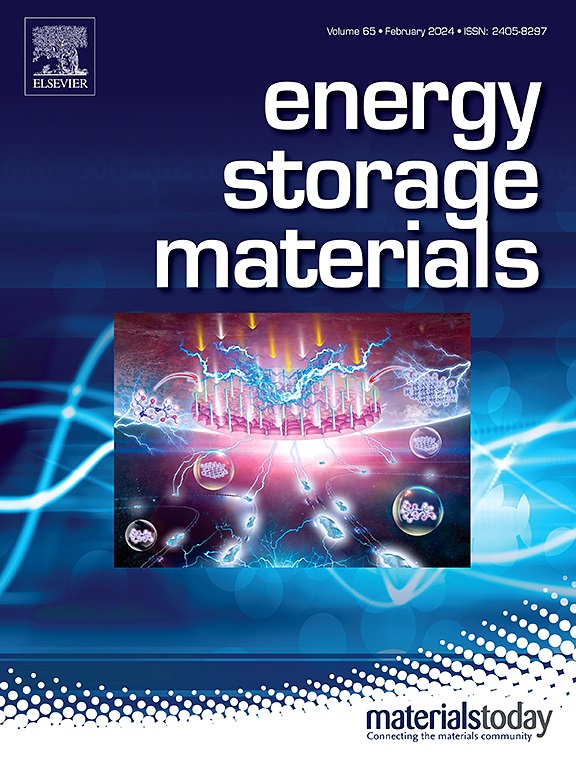Rectification effect: A universal strategy for single-atom electrocatalysts to enhance oxygen reduction reaction
IF 18.9
1区 材料科学
Q1 CHEMISTRY, PHYSICAL
引用次数: 0
Abstract
The M-Nx single-atom catalysts (SACs) are critical for efficient energy conversion technologies. However, most SACs with M-Nx moiety (M: Fe, Co, or/and Mn) suffer the strong binding ability with OH* intermediates in oxygen reduction reaction (ORR), which becomes a bottleneck in accelerating the kinetics. Herein, a universal “rectification effect” strategy is proposed by constructing a p-n junction, where an n-type ZnS semiconductor longitudinally bridges with p-type M-Nx moiety to weaken the interaction of M-Nx with OH*. As expected, the a-ZnS/Fe-NSC electrocatalyst exhibits remarkable intrinsic activity in alkaline media with a half-wave potential of 0.90 V vs. RHE, and long-term durability (a shift of only 10 mV in E1/2 after 8,000 cycles). This phenomenon can be ascribed to the optimization of electronic structure, the S-MN4 site can effectively activate the M centre with the intermediate spin state which possesses one eg electron (t2g4 eg1) readily penetrating the antibonding π-orbital of oxygen. Moreover, it offers a superior power density and higher discharge voltage in Al-air batteries. This universal strategy provides a rational perspective for the design of SACs and electronic structure engineering to construct robust active sites for high-performance oxygen reduction.求助全文
约1分钟内获得全文
求助全文
来源期刊

Energy Storage Materials
Materials Science-General Materials Science
CiteScore
33.00
自引率
5.90%
发文量
652
审稿时长
27 days
期刊介绍:
Energy Storage Materials is a global interdisciplinary journal dedicated to sharing scientific and technological advancements in materials and devices for advanced energy storage and related energy conversion, such as in metal-O2 batteries. The journal features comprehensive research articles, including full papers and short communications, as well as authoritative feature articles and reviews by leading experts in the field.
Energy Storage Materials covers a wide range of topics, including the synthesis, fabrication, structure, properties, performance, and technological applications of energy storage materials. Additionally, the journal explores strategies, policies, and developments in the field of energy storage materials and devices for sustainable energy.
Published papers are selected based on their scientific and technological significance, their ability to provide valuable new knowledge, and their relevance to the international research community.
 求助内容:
求助内容: 应助结果提醒方式:
应助结果提醒方式:


